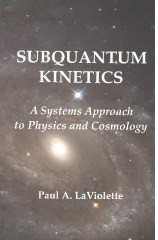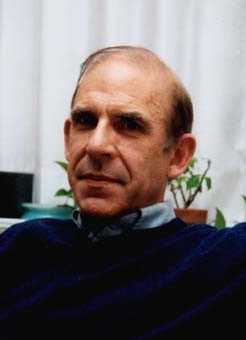This is the second expanded edition of a book originally entitled Subquantum Kinetics: The Alchemy of Creation. Its contents are as follows:
- Overview of the Methodology
- Basic Concepts
- Model G
- The Emergence of Particles and Fields
- Fields and Forces
- Energy Wave Behavior
- The Cosmological Redshift
- Matter Creation
- Genic Energy
- Stellar Evolution
- Electrogravitics
- Conclusion
It contains four Appendices:
- Subquantum Kinetics Predictions and their Verification
- The Differential Number Count Test
- The Pioneer Maser Signal Anomaly
- Areas Requiring Further Investigation
The essence of subquantum kinetics is that the basis of physical existence is process. That is, instead of considering the particles of matter as closed systems, subquantum kinetics conceives only open systems always exchanging particles and energy with the surrounding environment. It also postulates the existence of an etheric sea filled with subquantum entities, the etherons. For this reason it requires an absolute reference frame in space, the ether frame.
In the interesting Chapter 5 about Fields and Forces the author considers magnetism as being due to a moving electric potential field. In particular he calls attention to Ampere's force between current elements, an expression which is rarely to be found in modern physics textbooks. Instead of that we only find Grassmann's force (based on Biot-Savart's expression of the magnetic field of a current element and compatible with Lorentz's force). Despite this fact is should be remembered that Maxwell himself knew both expresssions for the force between current elements (those of Ampere and Grassmann).
In his masterpiece, A Treatise on Electricity and Magnetism, Vol. 2, page 174, paragraph 527, Maxwell compared these expressions and concluded that Ampere's force is undoubtedly the best, since it made the forces on the two elements not only equal and opposite but in the straight line which joins them. Grassmann's force, on the other hand, does not comply with action and reaction (the same as regards Lorentz's force). In the next page, paragraph 528, Maxwell said that Ampere's force should always remain the cardinal formula of electrodynamics. La Violette presents many relevant references related with the experimental and theoretical controversy Ampere versus Grassmann-Biot-Savart-Lorentz. In Chapter 6 he presents what he considers as flaws in Maxwell's equations. He also discusses Weber's electrodynamics, a theory developed by Maxwell's contemporary Wilhelm Weber, a collaborator of Gauss.
The author extends the idea of open systems to the whole universe, considering it infinite in extent and probably of eternal duration. He is against the big bang and against the expanding universe hypothesis. He developed these ideas in an earlier book, Beyond the Big Bang (Park Street Press, 1995), and in an important paper, P. A. LaViolette, Astrophysical Journal, Vol. 301, pp. 544-553 (1986), "Is the Universe Really Expanding?"
Instead of the big bang he proposes a tired-light model in which the photon loses energy to the intervening medium as it travels from a distant galaxy towards us. This creates a redshift and yields an alternative explanation of the cosmological redshift. He shows at length that the tired-light model yields a better fitting to the data than the big bang model based on the Doppler effect, in different tests: the angular-size-redshift, the Tolman surface brightness, the Hubble diagram, the galaxy number count magnitude, supernova data and the redshift quantization effect.
This book has a great amount of references, especially related to astrophysics and cosmology. It has clear and convincing criticisms of the big bang. Contains open discussion of relevant topics of modern physics. For these reasons I recommend it to all people interested in the foundations of science and in the deeper questions of nature. Andre Koch Torres Assis, Amazon



